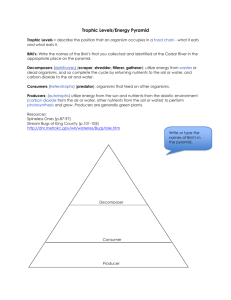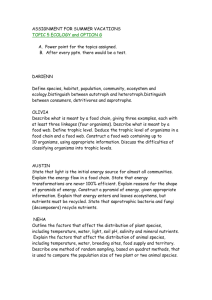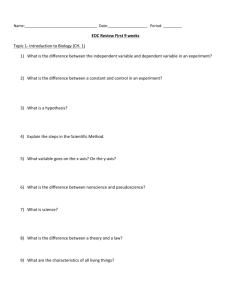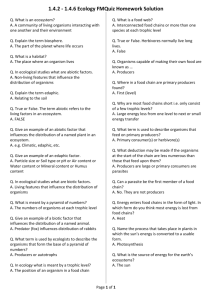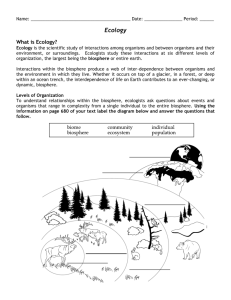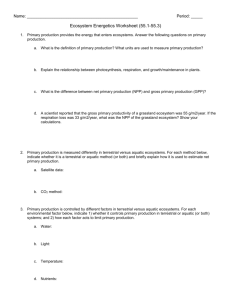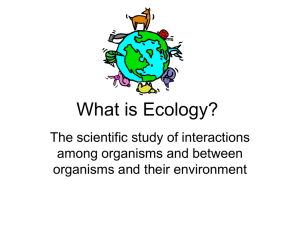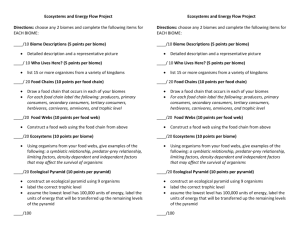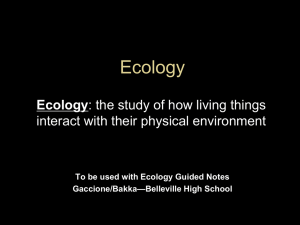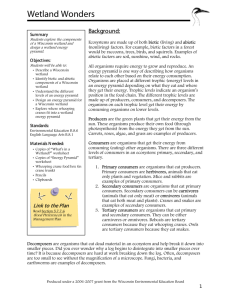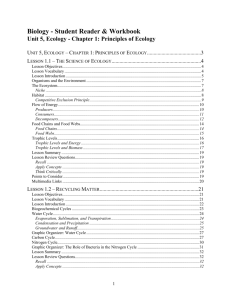Ecology - LangdonBiology.org
advertisement
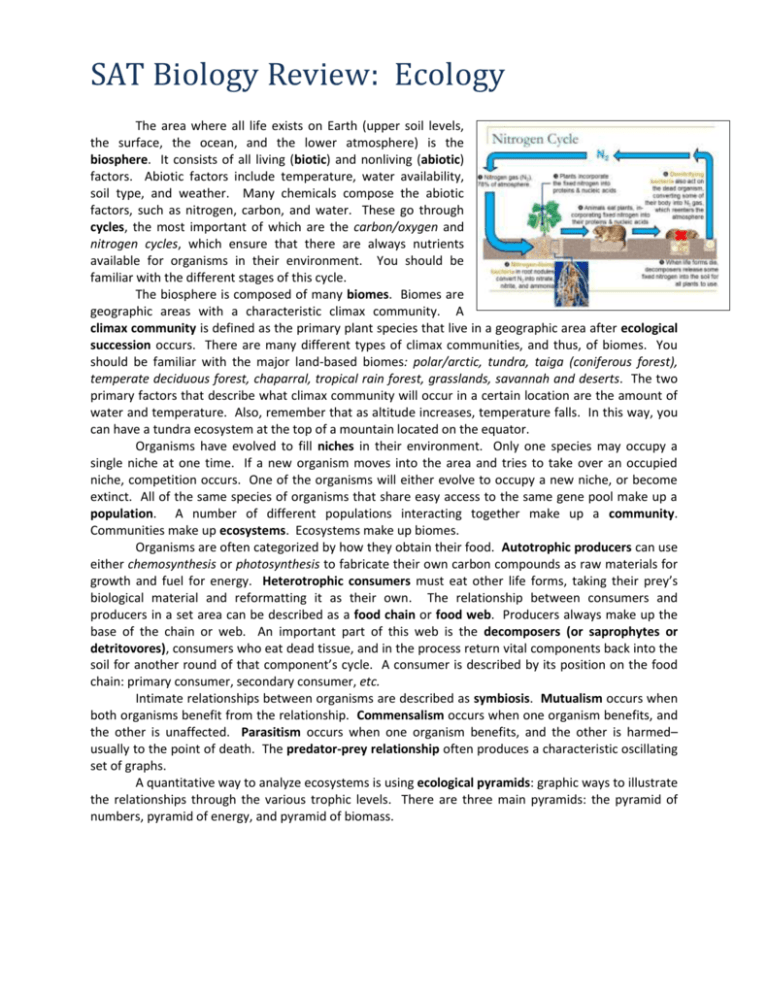
SAT Biology Review: Ecology The area where all life exists on Earth (upper soil levels, the surface, the ocean, and the lower atmosphere) is the biosphere. It consists of all living (biotic) and nonliving (abiotic) factors. Abiotic factors include temperature, water availability, soil type, and weather. Many chemicals compose the abiotic factors, such as nitrogen, carbon, and water. These go through cycles, the most important of which are the carbon/oxygen and nitrogen cycles, which ensure that there are always nutrients available for organisms in their environment. You should be familiar with the different stages of this cycle. The biosphere is composed of many biomes. Biomes are geographic areas with a characteristic climax community. A climax community is defined as the primary plant species that live in a geographic area after ecological succession occurs. There are many different types of climax communities, and thus, of biomes. You should be familiar with the major land-based biomes: polar/arctic, tundra, taiga (coniferous forest), temperate deciduous forest, chaparral, tropical rain forest, grasslands, savannah and deserts. The two primary factors that describe what climax community will occur in a certain location are the amount of water and temperature. Also, remember that as altitude increases, temperature falls. In this way, you can have a tundra ecosystem at the top of a mountain located on the equator. Organisms have evolved to fill niches in their environment. Only one species may occupy a single niche at one time. If a new organism moves into the area and tries to take over an occupied niche, competition occurs. One of the organisms will either evolve to occupy a new niche, or become extinct. All of the same species of organisms that share easy access to the same gene pool make up a population. A number of different populations interacting together make up a community. Communities make up ecosystems. Ecosystems make up biomes. Organisms are often categorized by how they obtain their food. Autotrophic producers can use either chemosynthesis or photosynthesis to fabricate their own carbon compounds as raw materials for growth and fuel for energy. Heterotrophic consumers must eat other life forms, taking their prey’s biological material and reformatting it as their own. The relationship between consumers and producers in a set area can be described as a food chain or food web. Producers always make up the base of the chain or web. An important part of this web is the decomposers (or saprophytes or detritovores), consumers who eat dead tissue, and in the process return vital components back into the soil for another round of that component’s cycle. A consumer is described by its position on the food chain: primary consumer, secondary consumer, etc. Intimate relationships between organisms are described as symbiosis. Mutualism occurs when both organisms benefit from the relationship. Commensalism occurs when one organism benefits, and the other is unaffected. Parasitism occurs when one organism benefits, and the other is harmed– usually to the point of death. The predator-prey relationship often produces a characteristic oscillating set of graphs. A quantitative way to analyze ecosystems is using ecological pyramids: graphic ways to illustrate the relationships through the various trophic levels. There are three main pyramids: the pyramid of numbers, pyramid of energy, and pyramid of biomass. A pyramid of numbers describes the actual numbers of organisms that live at each trophic level. It is like an environmental census. A pyramid of energy describes the amount of energy available at each trophic level. The rule of 10 (also called the 10% rule) applies here. Biological systems are very inefficient: they can only harvest about 10% of the available energy of the lower trophic level for their use. The rest is lost as waste or heat. This gives a pyramid of energy its unique shape with significantly smaller layers. A pyramid of biomass takes into account the amount of living material at each level. Imagine taking every producer in an area and weighing them, then every primary consumer, etc. Food webs show the flow of energy in a particular environment. The arrows indicate the flow of energy, and always point from the prey to the predator. Most food webs are limited in size, with only four or five trophic levels (due to the rule of 10).
